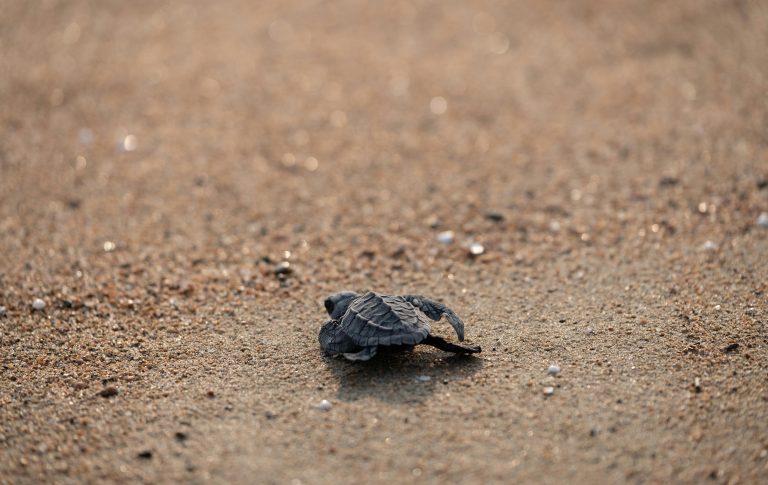Why Is My Tortoise Not Very Active?
If you notice your tortoise exhibiting signs of inactivity, there could be various reasons behind this behavior. Here are some common causes and corresponding fixes to address them:
Causes:
- The enclosure temperature has dropped under 70°F.
- Your pet is sick.
- It is winter, and the tortoise is brumating.
Fixes:
- Raise the temperature above 70°F. Depending on the species, the basking temperature should be between 80 – 100°F.
- Take the tortoise to the vet for treatment.
- Build a cold-proof pen for the pet to accommodate its brumation needs during the winter months.
By identifying the underlying cause of your tortoise’s inactivity and implementing the appropriate fix, you can help ensure the well-being and health of your pet.

Catch more details on the causes and solutions below.
6 Reasons Why A Tortoise Is Inactive With Fixes
1.The Temperature Is Falling:
Light and temperature play crucial roles in the well-being of tortoises. Being ectothermic creatures, they rely on external sources of heat to regulate their body temperature. Ideal daytime temperatures in the tortoise enclosure range from 75 – 85°F on the cool side and 95 – 105°F on the warm side, while nighttime temperatures should be between 65 – 75°F. When temperatures fall outside of these ranges, tortoises may become cold and slow down their metabolism, leading to decreased activity and appetite. Solution:
To address this issue, it’s essential to provide both heat and UV rays, as tortoises require both for their daily activities. While outdoor tortoises can rely on the sun for these energy sources, indoor tortoises need artificial heating and UV sources in their enclosure. Simply installing lamps is not enough; it’s crucial to ensure that the temperature remains within the tortoises’ comfort range.
- Artificial Heating Lamps: Invest in quality heating lamps to maintain the appropriate temperature range in the enclosure. Ensure that the lamps are positioned correctly to provide adequate warmth without creating hot spots or temperature fluctuations.
- UV Light: In addition to heat lamps, install UVB bulbs to provide tortoises with essential UV exposure. UVB rays are crucial for the synthesis of vitamin D3, which is essential for calcium metabolism and overall health in tortoises. Position the UVB bulbs according to the manufacturer’s recommendations to ensure proper exposure levels for your tortoises. By maintaining the appropriate temperature range and providing adequate heat and UV exposure, you can help your tortoises remain active and healthy in their enclosure. Regularly monitor temperatures and lighting conditions to ensure that they remain within the recommended ranges for your tortoises’ species and age.
Heating Light And Temperature
The primary function of a heating lamp in a tortoise enclosure is to maintain a warm environment conducive to the tortoises’ health and activity. Proper positioning of the lamp and regulation of distance from the floor help achieve optimal temperature distribution throughout the enclosure.
The temperature requirements for tortoises vary depending on their species. Here’s a general overview of the suitable temperature ranges for different tortoise species:
| Tortoise Species | Temperature Demand On Basking Area | Temperature Demand On Cool Side |
|---|---|---|
| Sulcata Tortoise | 85 – 105°F | 75 – 85°F |
| Hermann’s Tortoise | 85 – 95°F | 75 – 85°F |
| Russian Tortoise | 90 – 100°F | 70 – 75°F |
| Leopard Tortoise | 90 – 95°F | 75 – 80°F |
| Greek Tortoise | 95 – 105°F | 75 – 85°F |
| Red Foot Tortoise | 90 – 95°F | 75 – 80°F |
| Indian Star Tortoise | 85 – 95°F | 75 – 80°F |
| Egyptian Tortoise | 95 – 100°F | 75 – 85°F |
| Marginated Tortoise | 85 – 95°F | 75 – 85°F |

It’s essential to monitor the enclosure temperature with a digital thermometer and adjust as necessary to maintain these ranges. During the night, temperatures should be slightly cooler but not below 65 – 70°F to promote healthy sleep.
Heating lights should be turned on for 10 -12 hours a day and turned off at night to allow the enclosure to cool down. It’s recommended to replace heating lamps annually to ensure consistent performance and quality.
UV lights are also crucial for tortoises, as they provide both UVA and UVB rays. While UVB rays are essential for bone health and immunity, UVA rays influence tortoises’ mental state, activity levels, and appetite. Look for UV lamps with 10 – 12% UV output, and ensure they are on for 10 – 12 hours daily. Replace UV bulbs every six months to maintain effectiveness.
2. Your Tortoise Sick
Lethargy or inactivity is a common indication of illness in tortoises. During this time, tortoises divert their energy towards healing, resulting in increased sleep duration.
Once the tortoise has recuperated, it will resume its regular activities.
Solution
Treating a sick tortoise depends entirely on the specific illness it is suffering from. Therefore, the first step is to identify the disease.
Tortoises exhibit signs of illness from the onset, and it’s crucial to recognize these symptoms to diagnose the problem accurately. Failure to do so can exacerbate physical conditions and deprive the tortoise of necessary medical attention.
Below are five common tortoise diseases that can cause lethargy, along with their symptoms and potential treatments.
- Hypovitaminosis A
- Lack of vitamin A in the diet leads to hypovitaminosis in tortoises, making them susceptible to other diseases if left untreated. Symptoms:
- Inflamed eyelids
- Swollen eyes
- Difficulty breathing
- Wheezing
- Abnormal tissue development on the mouth and eyelid
- Swollen limbs
- Lethargy
- Refusal to eat
- Low immunity Treatment:
- Increase vitamin A sources in the tortoise’s diet, such as leafy greens, bell peppers, tomatoes, and orange and yellow vegetables.
- Administer antibiotic shots or drugs to expedite recovery.
3. Respiratory Illness
Respiratory illness is a common affliction among tortoises, often stemming from infections in their respiratory tract. This condition is typically caused by unhygienic living conditions coupled with low immunity. Prolonged hypovitaminosis can also contribute to the development of respiratory illness. Post-brumation tortoises, which have weakened immune systems, are particularly susceptible to this ailment. Additionally, exposure to cold, damp weather or dusty enclosures can exacerbate respiratory issues.
If left untreated, respiratory illness can progress to pneumonia, which poses a severe threat to the tortoise’s health. Lung damage resulting from the infection may not fully heal, leading to long-term respiratory complications.
Symptoms of respiratory illness in tortoises include a runny nose, swollen eyes, eye discharge, lethargy, loss of appetite, stress, wheezing, sneezing, and open-mouth breathing.
Treatment typically involves diagnostic tests performed by veterinarians to confirm the presence of respiratory illness. However, the symptoms alone are often indicative of the condition. Once diagnosed, veterinarians prescribe antibacterial, antifungal, or antiviral medications, sometimes administered via injection for more immediate effect.
To alleviate nasal congestion and stimulate appetite, nasal drops may be recommended. Additionally, gently wiping away nasal discharge with a soft cloth can provide comfort to the tortoise.
In conjunction with medication, maintaining a clean enclosure and slightly raising the ambient temperature can aid in recovery. The elevated temperature helps inhibit bacterial or fungal growth, facilitating the tortoise’s healing process.
4. Metabolic Bone Disease (MBD)
Metabolic Bone Disease (MBD) is a condition characterized by abnormal bone development in tortoises, which can also affect their shells. Insufficient levels of vitamin D, an imbalanced calcium-phosphorus ratio, and inadequate exposure to UVB rays are the primary factors contributing to this disease.
UVB rays, whether from natural sunlight or artificial sources, play a crucial role in the production of vitamin D within the tortoise’s body. Vitamin D, in turn, enables the effective absorption of calcium from the diet and supplements. This process is essential for the formation of a sturdy skeleton and a robust immune system in the tortoise.
However, a deficiency in UVB exposure or insufficient calcium intake disrupts this process, resulting in weakened bones and associated health issues.
Symptoms of Metabolic Bone Disease in tortoises include a soft shell, pyramiding (abnormal shell growth), deformed jaw, weak limbs, splayed-out legs, beak deformation, overgrown nails, paralysis, difficulty walking, and reduced activity levels.
Treatment for MBD involves providing the tortoise with a well-balanced diet according to their age and feeding routine. Hatchlings may require daily feeding, while adults should be fed approximately five times a week. Additionally, calcium and vitamin D supplements should be incorporated into their meals to address any deficiencies. These supplements can be in powder or solid form, ensuring adequate nutritional support.
Furthermore, installing a high-quality UV light source within the tortoise enclosure is essential to ensure proper UVB exposure, which is crucial for their overall health and bone development.
5. Shell Rot
It’s fascinating how resilient a tortoise’s shell can be, capable of withstanding weights up to 200 times its own. However, despite its remarkable strength, the shell is not invulnerable. A significant impact or blow can result in a cracked or broken shell, causing discomfort and potential health complications for the tortoise.
When a tortoise sustains a broken shell, the risk of infection becomes a serious concern. If bacteria or fungus infiltrate the wounds, the tortoise may develop a condition known as shell rot. Initially, shell rot is treatable, but if left unchecked, it can spread to neighboring plates and even internal organs. In severe cases, entire shell plates may detach due to the extent of the rot, leading to further complications such as bone cavities if the infection enters the bloodstream.
Recognizing the symptoms of shell rot is crucial for timely intervention:
- Lethargy
- Decreased appetite
- Soft areas around the injury site
- Black pits in the affected scutes
- Accumulation of white fluid under the tissue
- Foul-smelling discharge from the infected area
- Loss of shell plates
Treatment for shell rot involves a comprehensive approach aimed at promoting healing and preventing further infection:
- Maintain cleanliness in the tortoise enclosure by cleaning the substrate and water bowl daily.
- Provide a warm and dry environment for the sick tortoise, slightly increasing the temperature to aid recovery.
- Administer prescribed antibacterial soaks to the affected areas, followed by the application of healing creams.
- Ensure the tortoise receives a balanced diet and vitamin supplements to support its immune system and expedite healing.
- In severe cases, veterinarians may need to administer feedings via tube to ensure the tortoise receives adequate nutrition for recovery.
By diligently following these treatment steps and providing attentive care, the tortoise can recover from shell rot and resume its normal activities in due time.
Parasite attacks are surprisingly common in tortoises, often stemming from unsanitary living conditions and contaminated substrates. These infestations can significantly impact the health of the tortoise, leading to a range of symptoms indicative of parasite presence:
- Fatigue
- Reduced appetite
- Vomiting
- Diarrhea
- Presence of worms in the feces
To address a parasite attack and restore the tortoise’s health, proactive measures are essential:
- Deworming: Administering deworming treatment to the tortoise at least once a year helps eliminate parasites from its system. Consult with a veterinarian for guidance on the appropriate deworming regimen and dosage.
- Enclosure Hygiene: Maintaining a clean and hygienic environment in the tortoise enclosure is crucial for preventing parasite infestations. Regularly clean the substrate, water bowl, and any other habitat elements to minimize the risk of contamination.
By prioritizing deworming treatments and practicing diligent enclosure hygiene, tortoise owners can effectively combat parasite attacks and safeguard their pets’ well-being. Regular veterinary check-ups can also help identify and address any underlying health issues associated with parasite infestations.
6. It Is Brumation Period
Tortoises are highly sensitive to cold temperatures, which can significantly impact their metabolism and activity levels. When temperatures drop below 40 – 45°F, tortoises enter a state known as brumation, during which their bodily functions slow down dramatically.
In the wild, brumating tortoises typically cease eating about a month before winter sets in, allowing their digestive systems to clear out. As the cold season approaches, they retreat to pre-prepared burrows to enter a dormant state.
Even pet tortoises will instinctively brumate if not provided with adequate warmth. However, it’s generally not advisable to allow pet tortoises to brumate, as replicating the precise conditions of their natural environment can be challenging and may pose risks to their health and well-being.
The most effective way to prevent brumation and cold-induced inactivity in pet tortoises is by maintaining a consistently warm environment with temperatures above 70°F. For indoor tortoises, regulating temperature is relatively straightforward, but outdoor pets may require adjustments to their habitats.
Creating a winter enclosure for outdoor tortoises involves several key steps:
- Provide Shelter: Set up a dog house or similar structure at one end of the yard, elevated several inches above the ground to prevent moisture buildup. Install a ramp for easy access and a shade to shield the house from winter rains.
- Install Heating: Attach heating pads to the walls of the dog house to maintain a warm interior temperature. Additionally, consider adding a small exhaust fan to regulate airflow and prevent overheating. Ensure that all wiring is secure and inaccessible to the tortoise to avoid the risk of electrocution.
- Optimize Outdoor Space: Tortoises will still venture outside during the day, so ensure that the outdoor area provides adequate warmth. The soil can retain heat effectively, offering a comfortable environment for the tortoise to bask and explore.
By implementing these measures, tortoise owners can create a suitable winter habitat that minimizes the risk of brumation and ensures their pets remain healthy and active throughout the colder months. Regular monitoring of temperature and environmental conditions is essential to maintain optimal conditions for the tortoise’s well-being.
In addition to providing appropriate accommodation during the colder months, it’s crucial to maintain consistent dietary and hydration routines for pet tortoises. While tortoises may consume smaller portions of food and exhibit reduced activity levels during the winter, this behavior is typically a natural response to cooler temperatures and decreased metabolic activity.
Despite their decreased appetite and activity, tortoises should still have access to their regular diet and clean water at all times. Ensuring that their nutritional needs are met, even if they consume smaller amounts of food, is essential for maintaining their overall health and well-being.
It’s important for tortoise owners to monitor their pets closely for any signs of abnormal behavior or health issues during the winter months. While some decrease in activity and appetite is expected, significant changes or prolonged periods of inactivity could indicate underlying health concerns that require attention.
By providing a warm and comfortable habitat, maintaining regular feeding and hydration schedules, and monitoring their pets’ behavior and health, tortoise owners can help ensure that their pets remain healthy and happy throughout the winter season.
My Tortoise Is Always Sleeping: Is It Dying?
It’s important to understand the sleeping patterns of tortoises to recognize any potential issues with their health or environment. While adult tortoises typically sleep for a maximum of 12 hours, baby tortoises may sleep for longer periods, ranging from 19 to 22 hours at a stretch. Therefore, it’s not uncommon for young tortoises to nap for extended periods.
However, if a tortoise sleeps for more than 12 hours, remains inactive during the day, or shows a lack of appetite, it could be a sign of underlying issues such as a drop in temperature, illness, or the onset of brumation. In such cases, it’s essential to address these issues promptly to ensure the tortoise’s well-being.
Additionally, prolonged or excessive sleepiness could also indicate a more serious condition, such as a dying tortoise. In such cases, the tortoise may lack the energy to engage in normal activities and may exhibit other signs of decline. It’s crucial to be vigilant and familiarize yourself with the common signs of a dying tortoise to provide appropriate care and support during this challenging time.
By monitoring their sleeping patterns and behavior closely, tortoise owners can identify any potential issues early and take the necessary steps to address them, ensuring the health and comfort of their pets.
Concluding Words
Inactivity in turtles can indeed be a cause for concern, much like in tortoises. The reasons for inactivity and the corresponding solutions are often similar between the two reptiles. To gain a deeper understanding of turtle’s inactivity and the potential underlying causes, I recommend exploring the articles provided below:
[Article 1 Title: Understanding the Causes of Inactivity in Turtles]
[Article 2 Title: Solutions for Addressing Inactivity in Pet Turtles]
These articles will likely provide valuable insights into the factors contributing to a turtle’s inactivity and offer practical solutions to help address these issues effectively. By delving into this information, turtle owners can better care for their pets and ensure their health and well-being.
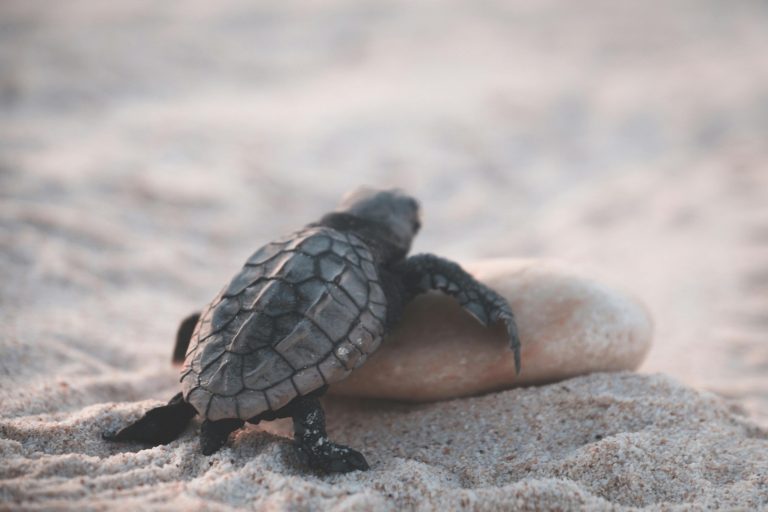
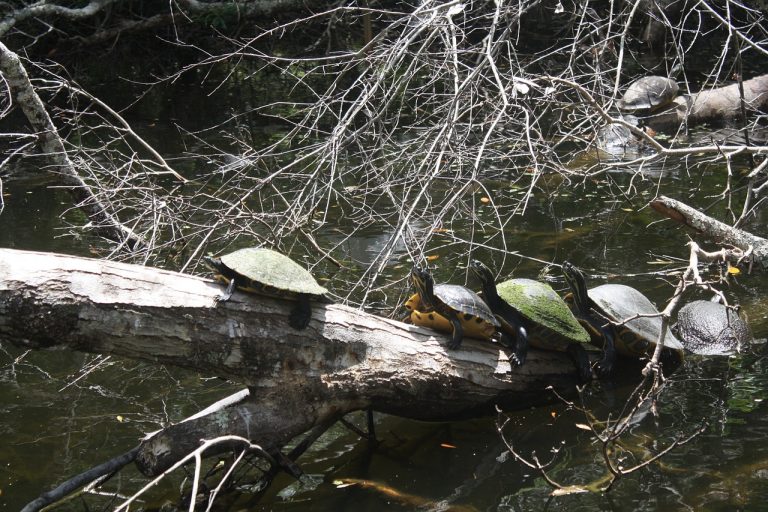
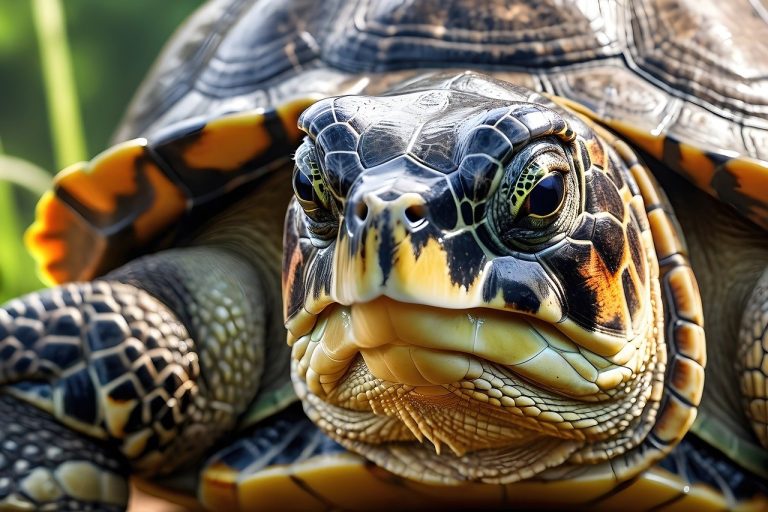
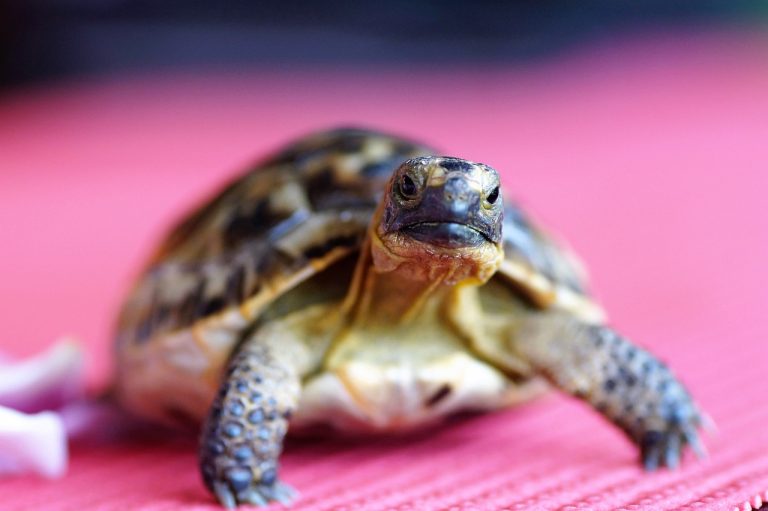
![Why Did My Sulcata Tortoise Die? [8 Probable Reasons]](https://spreadhapiness.com/wp-content/uploads/2024/03/sulcata-t-2-768x512.jpg)
